Japanese Knotweed does not directly cause structural damage but can exploit existing weaknesses in infrastructure, such as cracks, gaps or holes, and any weak areas in building foundations. As the plant grows it expands these weak areas, making the crack or gap larger which causes the damage to the structure. To summarise, knotweed cannot grow into the structural material, however it does cause larger cracks and therefore damage as it grows through weak areas.
What does knotweed damage look like?
Below are some great examples of how knotweed grows through gaps and cracks in hard surfaces such as concrete, tarmac and patio decking. In each case you can clearly see how the underground roots have grown shoots through weak spots causing further cracking and damage.

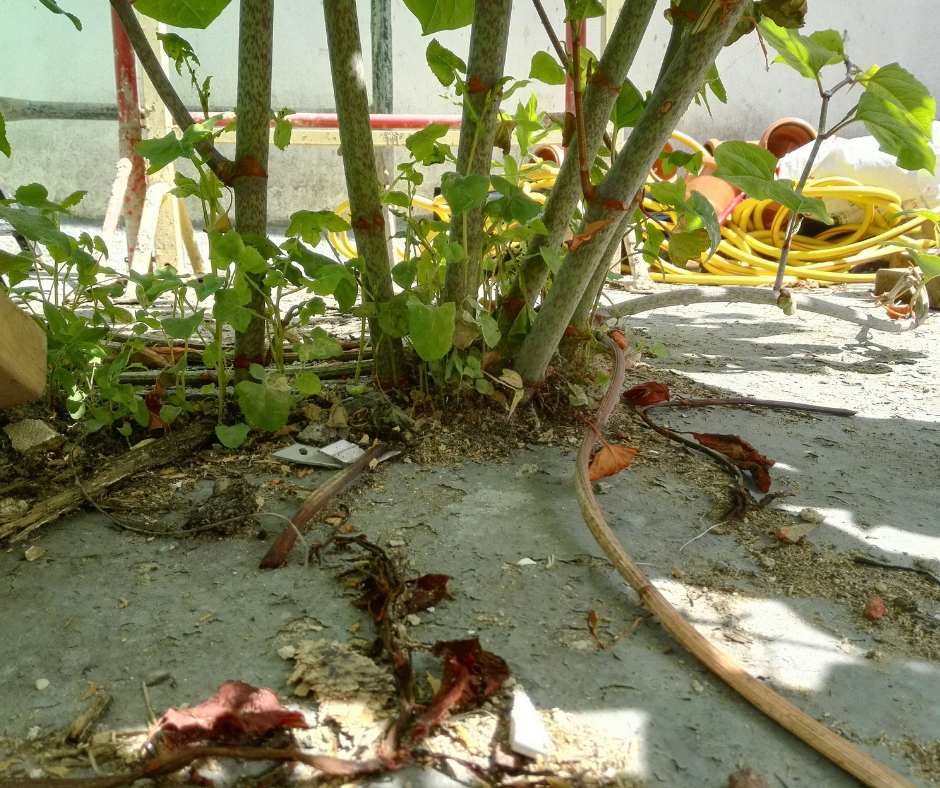
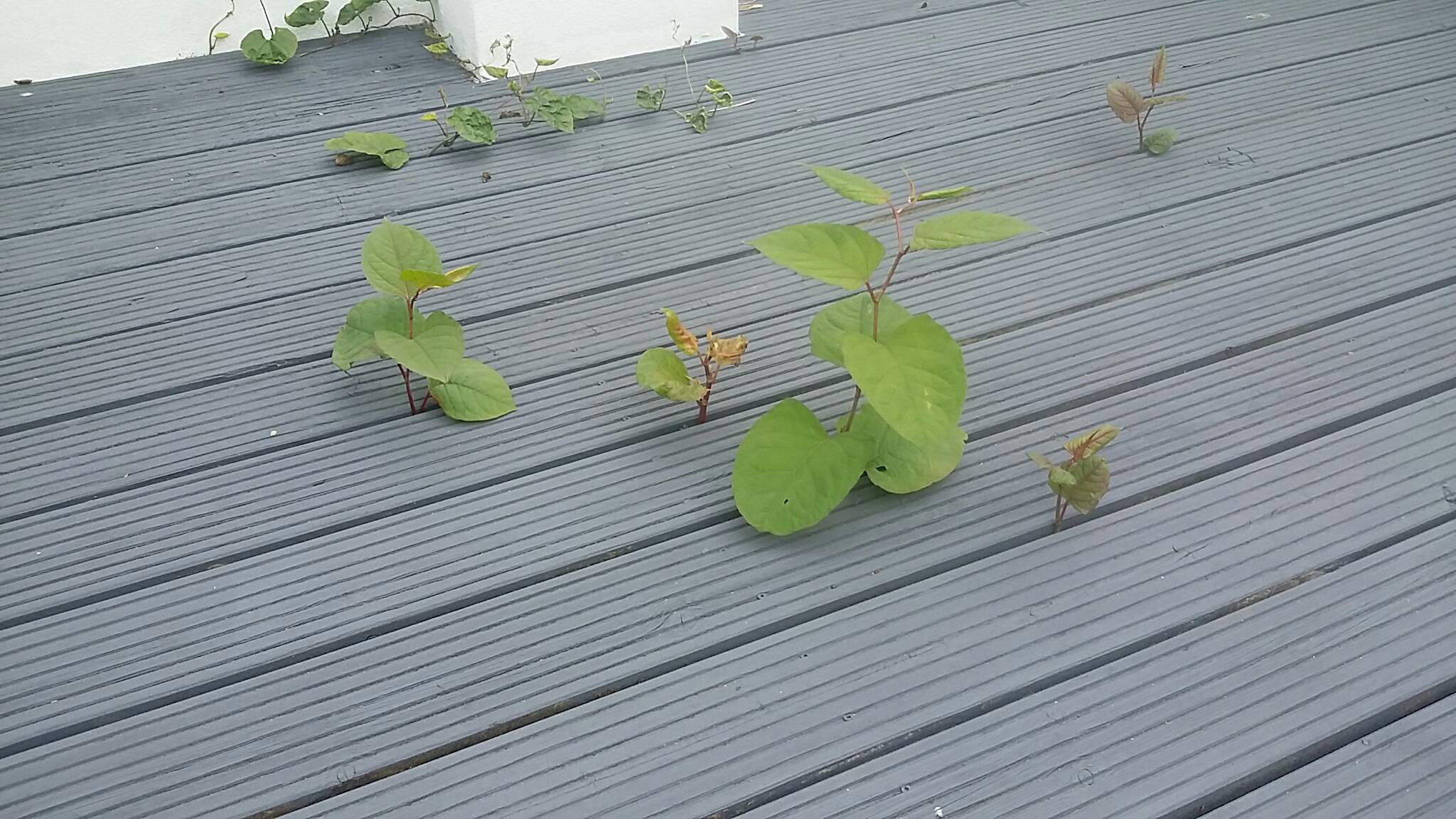
How destructive is knotweed?
If the above pictures illustrate how knotweed growth can damage a hard structure such as concrete, it’s easy to see how the same can happen to buildings. Typically knotweed rhizomes growing underneath buildings will grow through any weak areas of foundations into the building. The resulting damage lends itself to water leaks creating internal damp issues and possible weakness to internal structures.
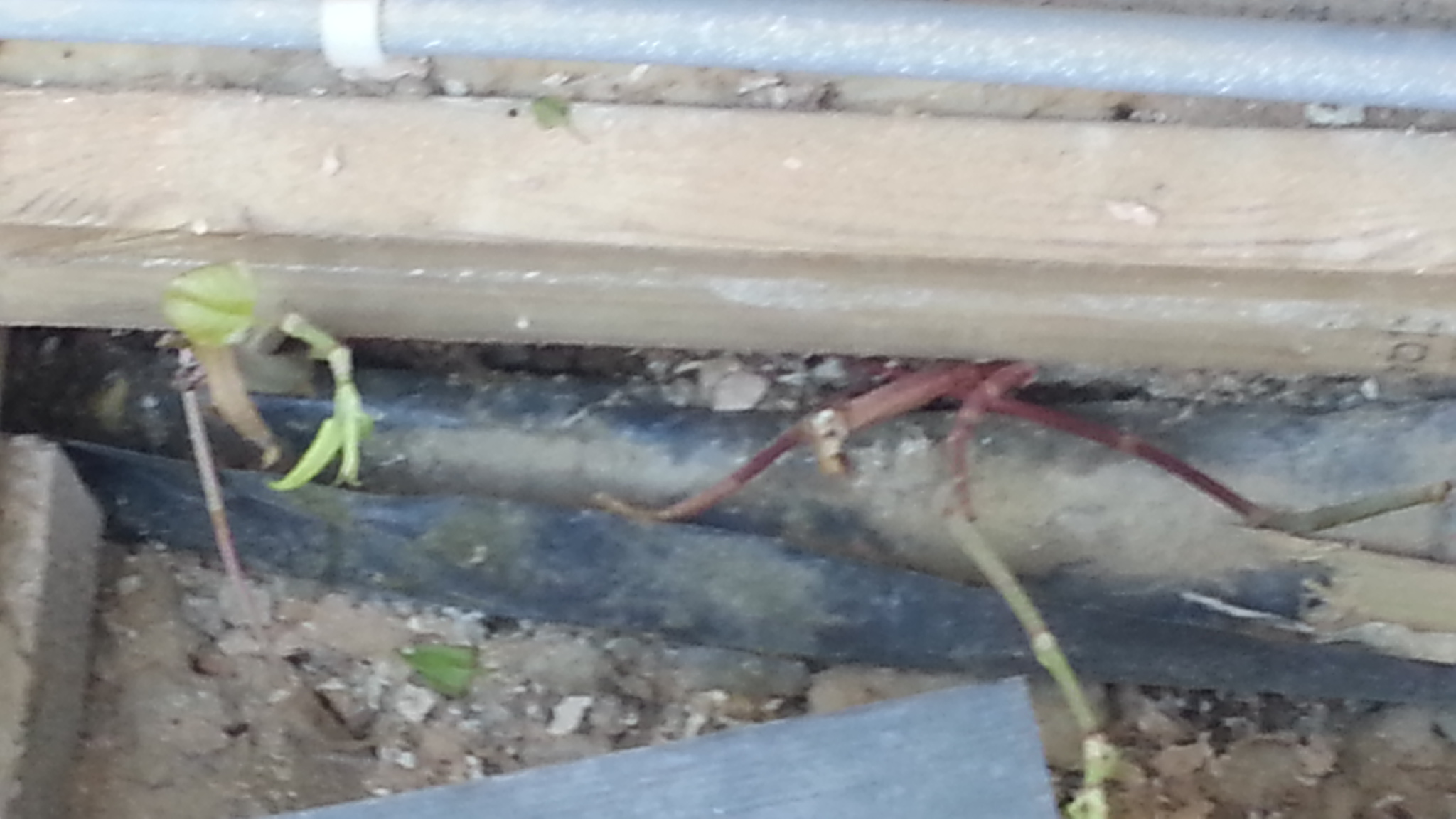
Another example of knotweed ‘creep’ is shown here where it has grown through cracks in the wall, weakening the structure not only by lateral growth but by the knotweed mass putting pressure on the wall itself.
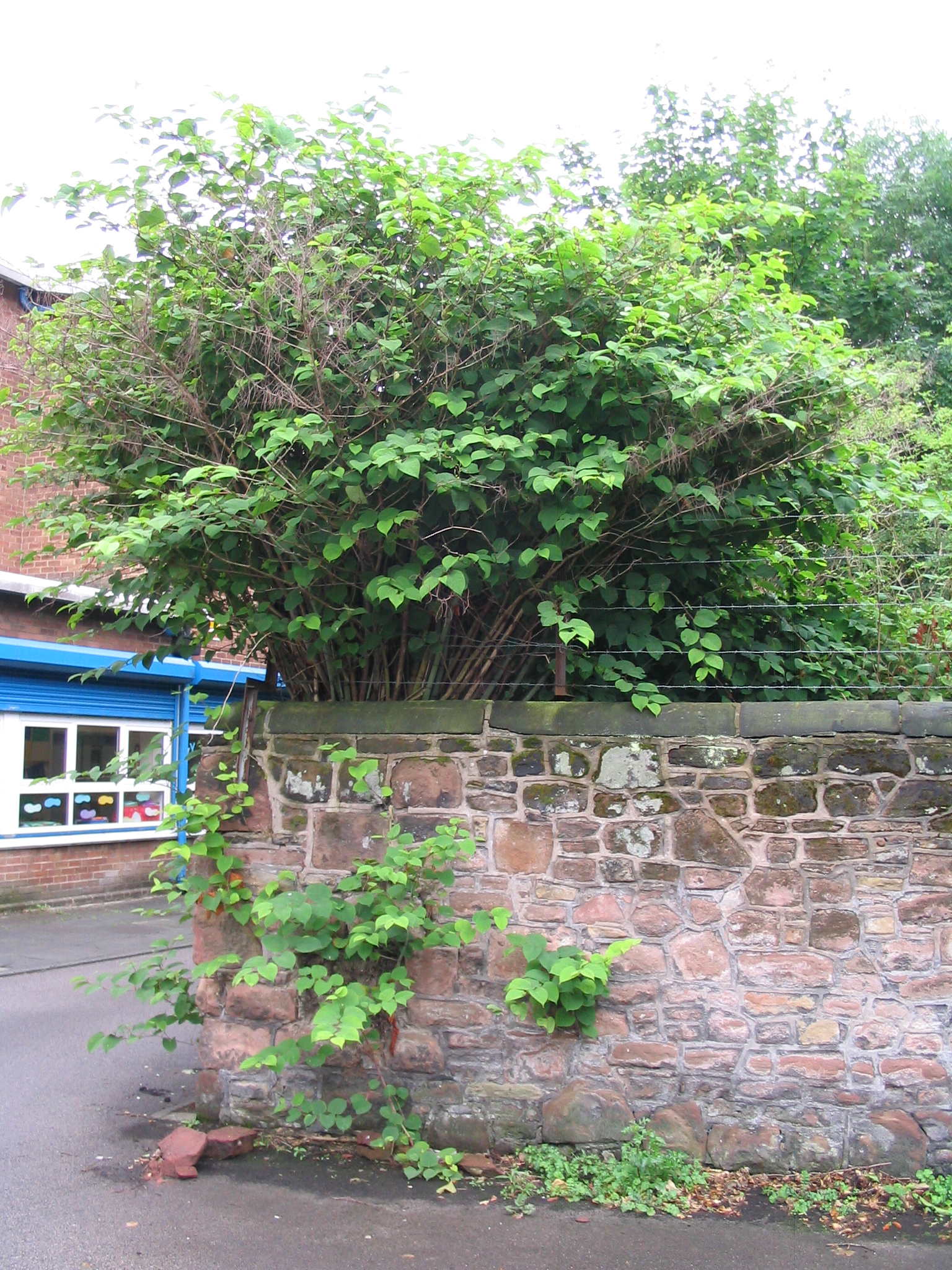
Buildings generally have underground infrastructure and here we can see knotweed growing through drainage systems, causing a complete blockage and breakage of the pipes.

Can you build on a site with Japanese knotweed?
Yes you can build on a site that has identified knotweed, however there is a right way to go about it, and severe consequences if knotweed is ignored. For instance, if knotweed is not detected (via a survey) on new build development sites it will emerge after the build has completed causing havoc to the new property owners. Some examples seen here:

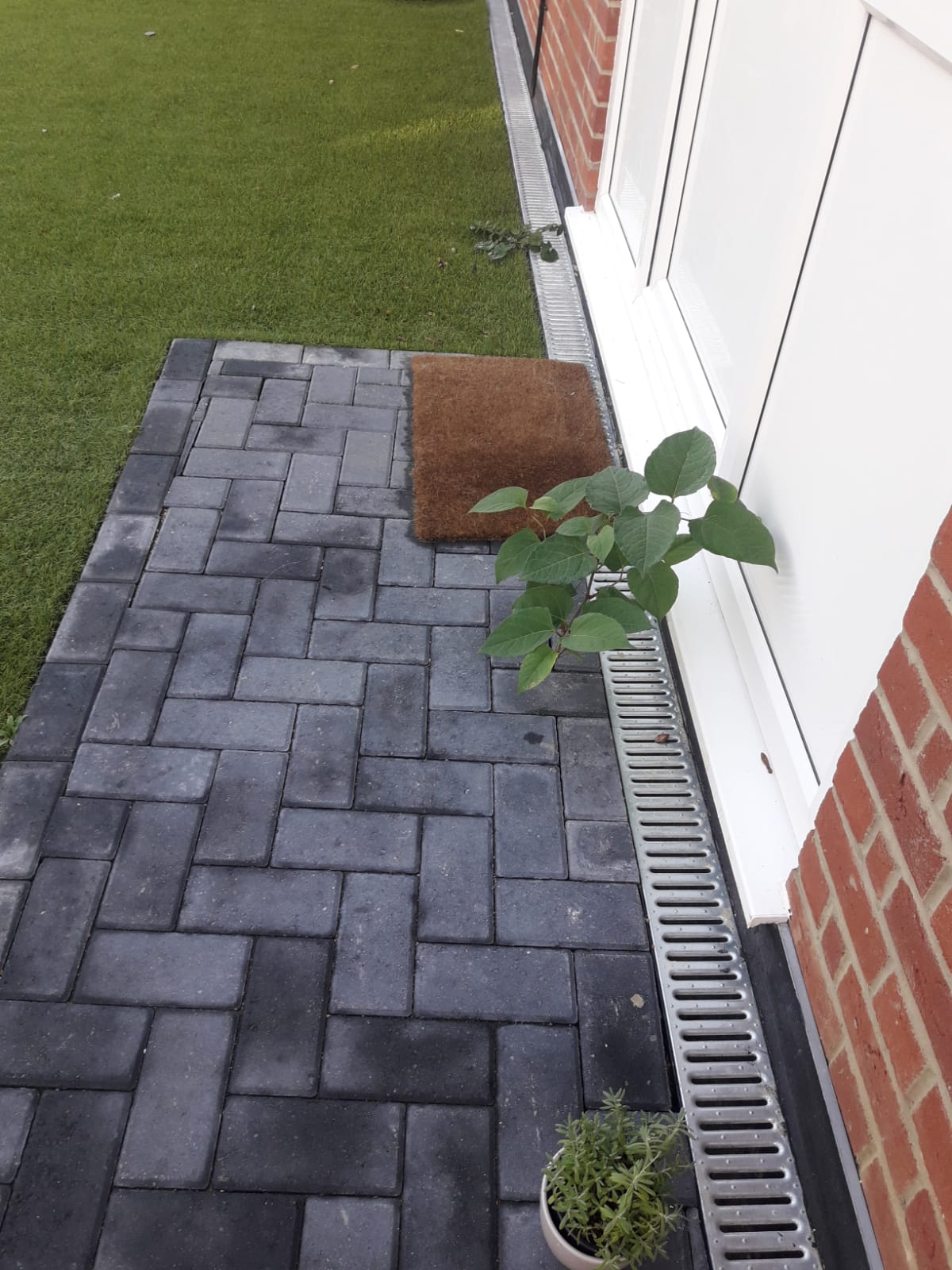
To build on land that has knotweed means it has to be either controlled with a herbicide treatment plan in place, or excavated and either moved to an area of the site where future disturbance is not planned (see our excavation options), or removed from site completely. In some circumstances (depending on the site) knotweed can be buried in a controlled way that ensures there will be not future growth. Ask us for more details on this.
If, however you purchase a site that has knotweed and the entire site is deemed for development we would recommend complete removal.
To conclude
Sites with Japanese knotweed on can be used for development as long as the knotweed is under a management plan or completely removed via excavation. For more details please give the team a call.

